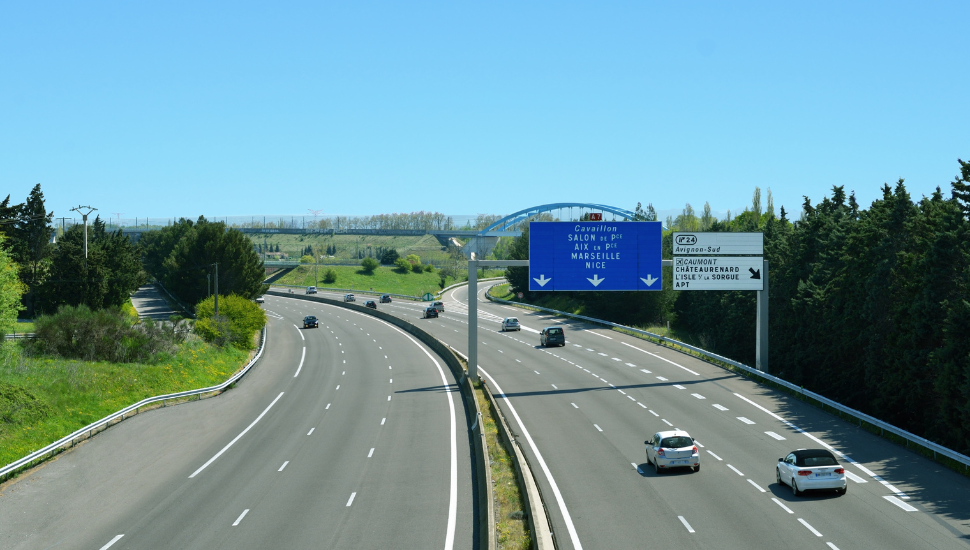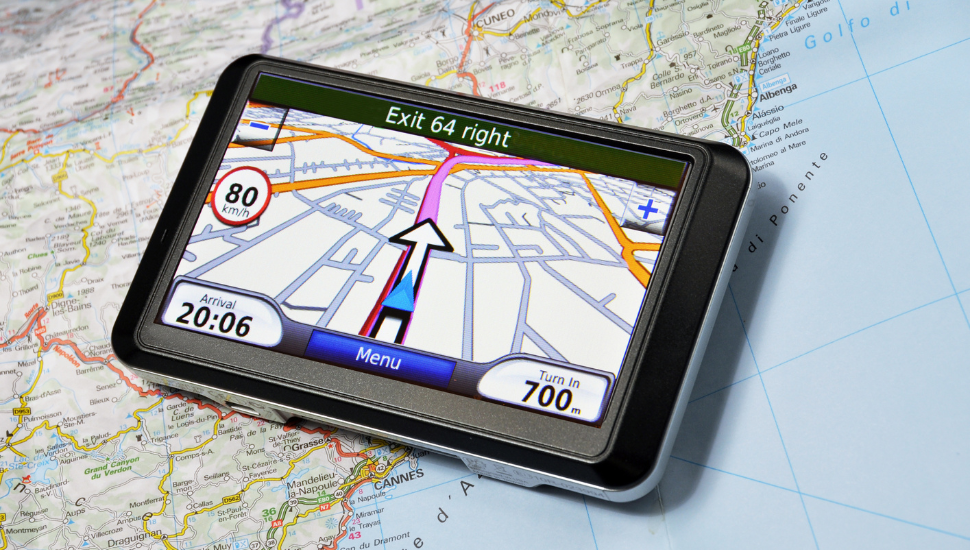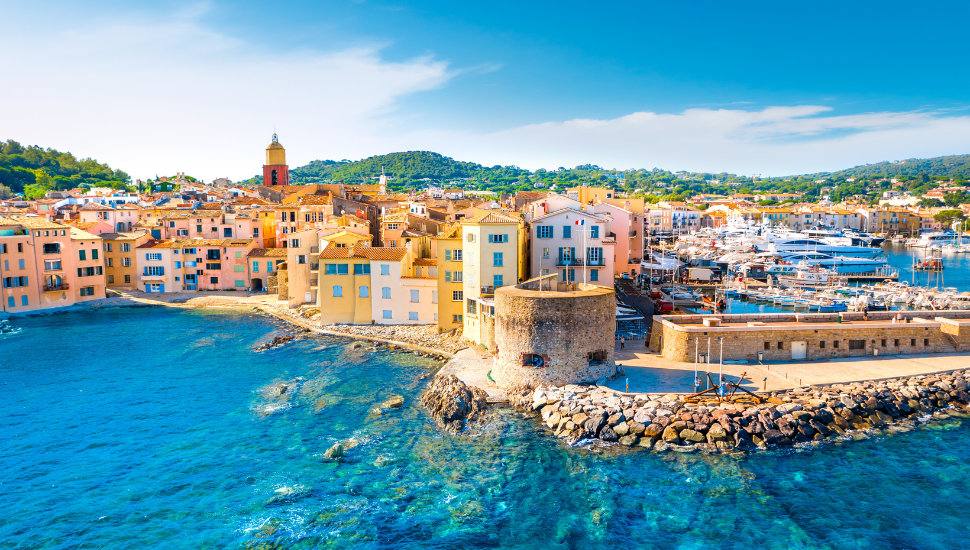Best Driving Routes to the South of France
The beaches, the glorious hinterlands, the magical light, the glamour... the South of France remains one of the most alluring destinations in Europe. And we Brits love it.
But what's it like to drive there? What should you know before you go? And what's the best route?
The English Channel
First and most obviously, you'll need to get your car either over or under the English Channel! You have two options:
Eurotunnel (LeShuttle)
Simply drive your car on to the Eurotunnel (LeShuttle) train at Folkstone and in just 35 minutes you'll be in Calais.
Generally speaking, this is slightly more expensive than taking the ferry, but do shop around for special deals.
Ferry from a southern English port
The five most-used ferry routes to France are as follows:
- Dover to Calais
- Dover to Dunkirk
- Newhaven to Dieppe
- Portsmouth to Caen
- Portsmouth to St Malo
Staying overnight in port
By booking an early morning connection to France and staying overnight, you'll have the entire day to make progress on the French motorway system (autoroute).
If you're starting your trip in a northerly part of the UK, staying in port overnight will make a lot of sense.
Despite the excellent autoroutes, reaching the South of France is no simple task: you'll be putting in some serious driving hours.

Take regular breaks
It's important to take frequent rest stops as you move south. Thankfully, there are service stations roughly every 15 km (established to encourage drivers to take breaks).
Alongside snacks, refreshments and toilets, you'll find other amenities such as picnic tables, children's play areas and showers.
Best routes south from Calais to Languedoc-Roussillon
Most Britons will begin their French odyssey in Calais. We'll use Languedoc-Roussillon as an example destination.
The main routes south from Calais are:
- Via A71 and A75 - ideal if you want a pit-stop in Paris!
- Via A75 - similar to above but skirting the Loire Valley.
- Via A26 - this route avoids Paris completely and passes by Lyon.
Calais to the South of France: How long will it take?
The drive time from Calais to Languedoc-Roussillon is around 11 hours. However, you'll need to factor in regular breaks - and of course overnight stays.
Staying overnight as you drive south
You'll almost certainly need to book a hotel along the route for one or possibly two nights.
This being France, there are countless amazing places to stay.
Examples include Troyes - the old capital of Champagne, famed for its charming half-timbered houses; and Dijon, the capital of Burgundy - a medieval town with cobbled streets, ancient cathedrals and plenty of fabulous cuisine.
Rather than rushing south as fast as possible, why not make the most of your journey?
Whether you love medieval cathedrals, natural parks, or bustling metropolises, there's something for all tastes.

Driving from Caen to the South of France
If you take the ferry to Caen, you can expect slightly shorter driving times to the south.
A common route is to pass through Le Mans and Tours (A28), then take either the A20 through Limoges or the A71/A75 through Clermont-Ferrand.
Again, there are numerous pretty towns where you can book an overnight stay.
How much are French Toll Roads?
Expect to pay between 15 and 40 euros to access a French Toll Road.
You can pay in cash with euros, or with a major credit/debit card. However, it’s a good idea to bring euros since not all toll booths accept all card types.
While Toll Roads add to your costs, they are superbly maintained, so you can expect a smooth, quick journey.
Can I go by non-toll roads?
It's possible to reach the south of France without using Toll Roads, but it’s not recommended. The money you save won’t be worth the much-longer driving times!
If you do choose the non-Toll Road option, you'll need to plan your route carefully and you'll most likely need more overnight stays to make the journey bearable (adding to the cost!).
Look out for green arrows at toll booths, since these accept both cash and cards.

South of France Maps
Alongside a printed road atlas for France, various map apps will make planning your trip easier.
Citymapper, for example, will tell you the most efficient way to get from A to B. It’s also great for exploring cities by public transport.
Google Maps is another good option, but it isn’t quite as dynamic as Citymapper, and may present fewer route options.
Maps.me offers good offline maps - just download the map areas you need before you set off.
Make sure you have data: Roaming or SIM card?
Ensure you know how to turn on data roaming for your smartphone.
However, it may well be cheaper to buy a French SIM card with data. You can buy a French prepaid SIM online from retailers such as Amazon.
While you could rely on offline maps (such as Maps.Me), having data will ensure you can get other information while on-the-road - e.g., nearby hotels, service stations and attractions.
Road trips in the South of France
Driving in France's southern regions presents you with many incredible views. Think mountains, gorges, lavender fields, wineries - and of course the shimmering Mediterranean.
Here are some popular road trip routes to consider - after you've recovered from the journey south, of course!

Cassis To Saint Tropez
From tranquil fishing villages to high-end glamour.
Cassis is a charming fishing village and port positioned on the Mediterranean between Marseille and St Tropez.
The pebbly beach boasts a shallow gradient, so it's ideal for kids to splash about in. Consider renting a sun lounger if you’re staying for a few hours.
Watch the locals play pétanque in the square near the seashore, then enjoy fresh seafood in one of the port-side restaurants.
Moving east, the tranquil, car-free island of Porquerolles awaits. Park up on the mainland and hop on a ferry.
Highlights of Porquerolies include the 14th century Fort Sainte Agathe, which affords splendid views over the island of Hyères.
Complete your journey in Saint Tropez, a perennial favourite among Europe's jet-set.
Once Bridget Bardot starred in Et Dieu Créa la Femme (And God Created Woman; 1956), this sleepy port town was transformed into a mecca for the rich and famous.
If possible, visit in spring or autumn - and avoid the summertime tourist hordes!
The Côte Bleu
The Côte Bleu (the Blue Coast) stretches along the coast from Marseille to Martigues.
It's far less busy than the more popular St Tropez-Nice route (Côte d’Azur / French Riviera).
If you're seeking quieter beaches, The Côte Bleu is a rewarding option.
The Luberon
This wonderful hinterland route runs north of Aix-en-Provence.
Highlights include Gorges de Verdon, a kind of French Grand canyon; and Lake Sainte-Croix, where you can stop off for a dip!
Get a Quote